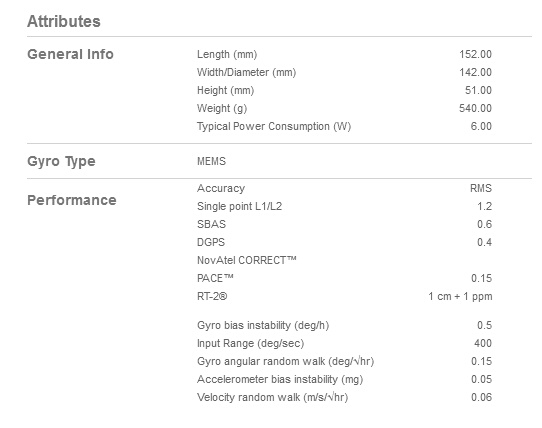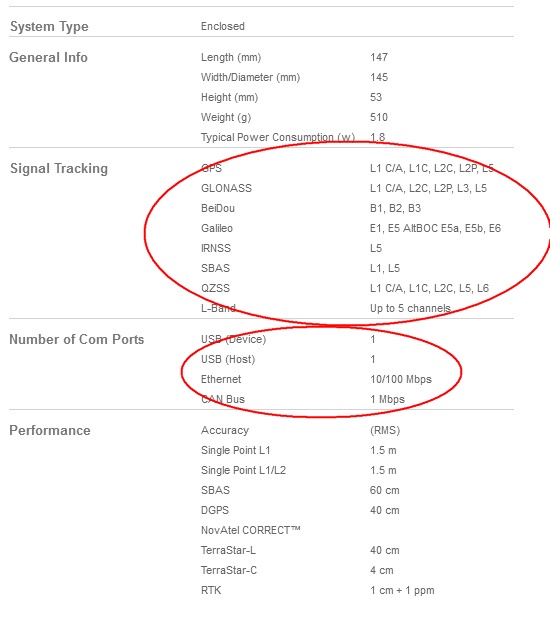The differences between a cheap GPS and a high end commercial GPS:
Narrow band RF front end Vs wide band front end.
A cheap GPS will only track L1 C/A which is a fairly narrow signal, a good GPS will also track the P(Y) code which is wider bandwidth.
1 bit Vs 2 bits sampling.
A low end GPS will use a 1 bit front end, a better one will normally be 2 bits.
16 MHz Vs 25/50 MHz sample rate.
Lower end systems tend to use a lower sampling rate, that's all you need for C/A code.
Single frequency / signal Vs multi-band, multi signal.
A basic GPS only tracks L1 C/A, in addition to the already mentioned L1 P(Y) code a high end one will also track signals on the L2 (L2C and P(Y)) and L5 (L5C) bands.
Dual antenna support
Some high end GPS systems will support two antennas and run an RTK like correction between the two allowing you to get good accuracy heading information even when stationary. Low end GPS you can get direction of travel accurately when moving but that doesn't tell you which way you are facing and only works well above a certain speed.
RF shielding.
GPS signals are really weak. If you mount a GPS antenna close to the receiver or other electronics then you risk noise getting into your GPS system. In the past I've spent weeks stopping the 37th harmonic of a clock signal from leaking into a GPS antenna in order to gain an extra 0.5 dB of SNR. For a cheap system no one would care about that, it only matters when you are trying to get the last little bit of performance.
Running completely stand alone and only tracking L1 a good GPS will (with a lot of assumptions, hand waving and approximations) give an RMS error that is around half that of a cheap consumer unit.
And this is before we get into the extra CPU power and investment in terms of software engineer time required to allow things like RTK corrections to improve accuracy down to 1 cm with just GPS alone, no IMU needed.
And then you have all of the extra stuff needed for GLONASS, Beidou, Galileo and all of the other GNSS things that are outside GPS that a good receiver will do.
Those NEO-7P modules from ublox are very good position accuracy for the price but are very similar in terms of hardware to the $15 base model NEO modules. The extra cost isn't for parts, its for the development effort behind the software they are running. They are still a long way off from a high end of GPS, list price for a high end GPS with all the features enabled can be over $10,000.
Those $10,000 systems aren't just a Ublox with a GPS antenna put together in the same box.


